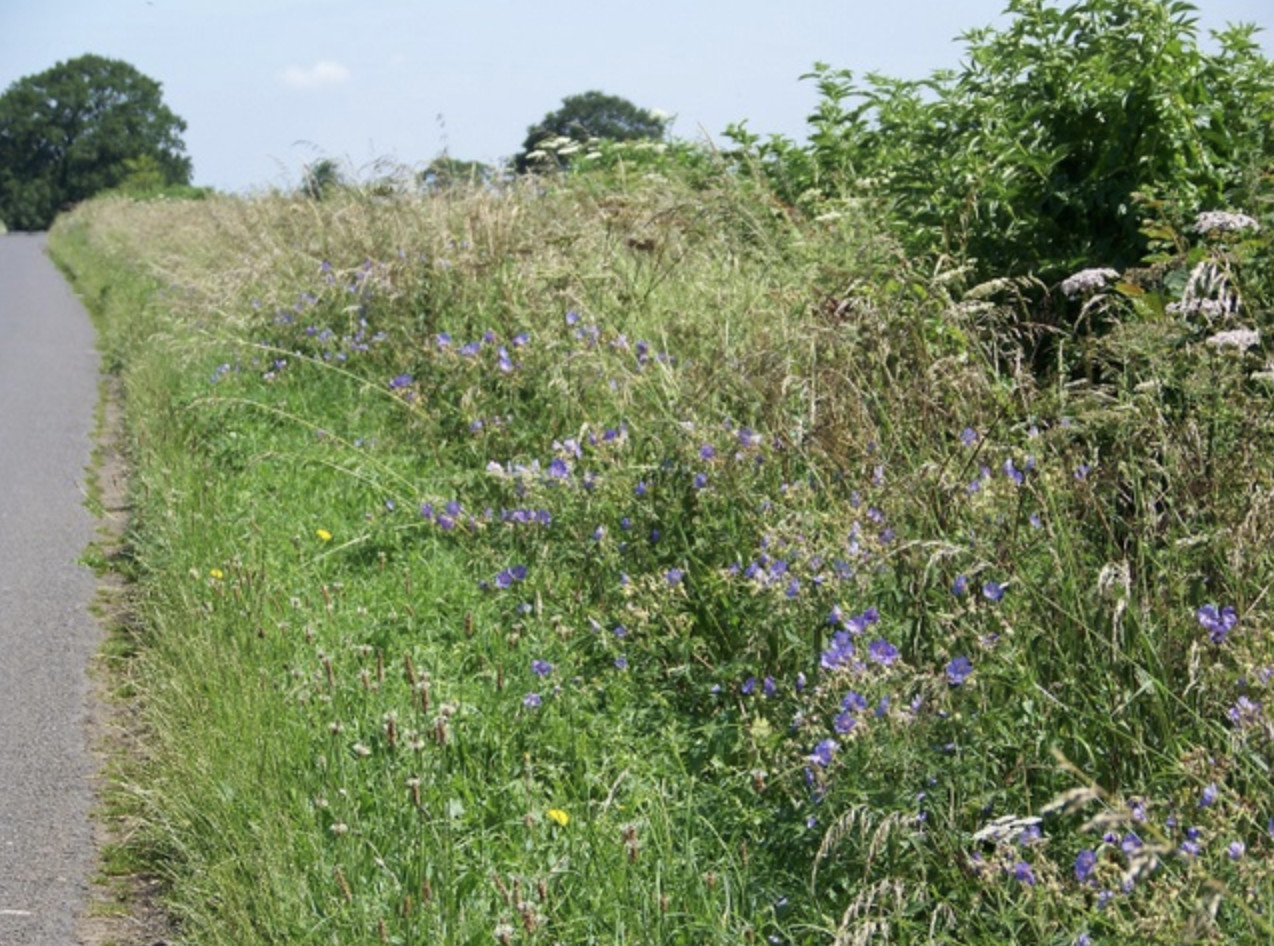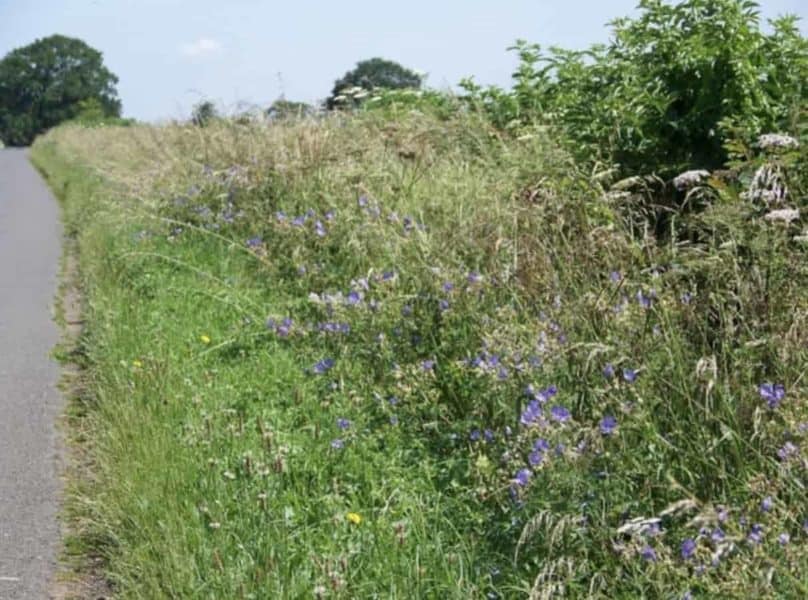Fleeing down grassy corridors
from whirring teeth
that hack at your habitat
with ill-managed discipline;
this rich mossy canvas
spat out as loamy clots,
to line the limits
of your enclosure.
Guided by twin suns
that cut towards
your changing horizon;
an oily mirage
unveiled at the last,
by foul sounds
of noxious breath.
The light of a thousand
distant suns fades
between artificial shadows
cast by narrow margins;
the price you must pay
for verging on the edge.

This poem is inspired by recent research, which has found that better-managed road verges can help boost the effectiveness and conservation of pollinating insects.
Roadside verges are defined as the strip of land between the roadside and the fence, hedge, or wall adjacent to it. Such verges provide food and shelter for many species of animals such as grasshoppers, shrews, and moles. Furthermore, road verges have the potential to significantly aid in the conservation of pollinators, such as bees, butterflies, and moths, especially given the significant area of land that they collectively cover.
By reviewing 140 studies into the impact that roadside verges can have on pollinators, researchers have found that while traffic and road pollution can cause mortality and other negative impacts, the benefits of road verges to pollinators far outweigh the costs. These benefits can be strengthened further by the strategic management of road verges, specifically by creating high quality habitats on new and existing road verges, reducing mowing frequency to 0–2 cuts per year, and reducing the impacts of street lighting, which can confuse nocturnal pollinators.
By making small changes to the management of our road verge network, local authorities and others involved in road verge management can make a significant difference. Doing so will help to realise the potential that road verges have in helping to reverse the decline of pollinators.
If our reporting has informed or inspired you, please consider making a donation. Every contribution, no matter the size, empowers us to continue delivering accurate, engaging, and trustworthy science and medical news. Independent journalism requires time, effort, and resources—your support ensures we can keep uncovering the stories that matter most to you.
Join us in making knowledge accessible and impactful. Thank you for standing with us!

